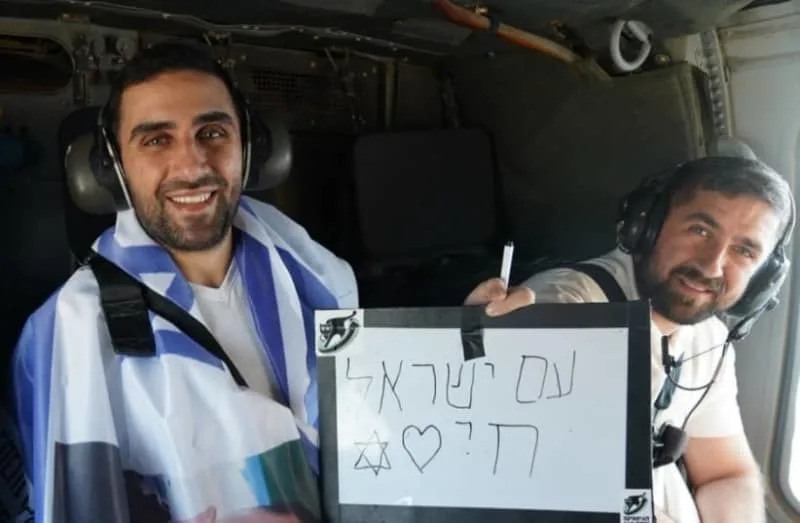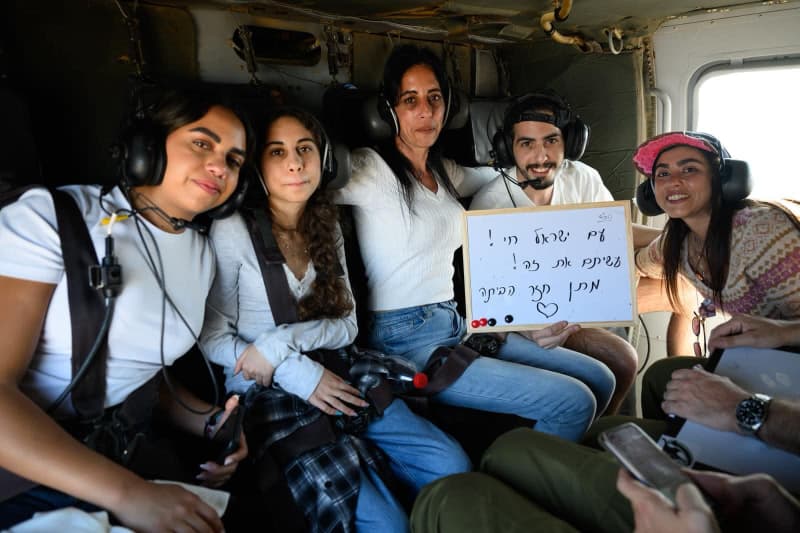“From the extensive experience we have gained, we know that family reunification is a critical part of the healing and rehabilitation process,” she said.
Deputy Director of Sheba Medical Center Dr. Yael Frenkel Nir confirmed on Monday that the hostages are in good enough medical condition to reunite with their families.
“The many days of captivity are clearly evident, but they are all in a condition that allows them to be reunited with their families while we monitor their medical condition,” she said.
“From the extensive experience we have gained, we know that family reunification is a critical part of the healing and rehabilitation process. In the coming days, and depending on their medical condition, they will continue to undergo a series of comprehensive tests.”
Former hostages Elkana Bohbot, Yosef-Chaim Ohana, Bar Kuperstein, twin brothers Ziv and Gali Berman, David and Ariel Cunio, Rom Braslavski, and Maxim Harkin are currently being treated at Sheba Medical Center in Tel Hashomer.
The last 20 living hostages were released by Hamas on Monday morning as part of the first phase of the ceasefire agreement between Israel and the terror group, over two years after they were captured.

Former hostage on his way to Sheba Medical Center, two years after being captured by Hamas,on October 13, 2025. (credit: IDF SPOKESPERSON UNIT)
Hostages expected to have deteroriated health
Estimates from health care professionals expected the released hostages to suffer from severe malnutrition and extreme salt and vitamin deficiencies. Additionally, because of the conditions they were kept in, they are at risk of developing refeeding syndrome.
The hostages are suffering the long-term consequences of two years of captivity: extreme starvation leads to loss of muscle and fat, depletion of essential lipids, and the use of whatever muscle remains as a source of energy.
Personnel at Sheba, Beilinson, and Ichilov hospitals have been instructed to implement a gradual and exceptionally careful treatment.
Alon Ohel
A shrapnel injury in Alon Ohel’s eye on October 7 is now putting him at risk of permenant vision loss, Maariv reported on Monday citing a specialist eye doctor. There is also reportedly a risk of him losing site in his other eye.
Dr. Shulman, director of the eye department at Assuta Hospital, explained, there are two main dangers in a penetrating injury: “The first is damage to the integrity of the eyeball in all its parts, the cornea, the lens, and the retina. In such a situation, immediate emergency surgery is required within just a few hours, to try to preserve the structure of the eye. Even then, in many cases, vision remains severely damaged. The second danger is intraocular infection, a condition that can develop rapidly and lead to complete loss of the eye if not treated in time.”
Dr. Shulman adds that injuries from metal fragments can be particularly complex: “Metal debris left inside the eye can trigger an inflammatory response in the body, and even cause local poisoning. Therefore, it is very important to identify them through imaging tests and remove them with delicate surgery.”
Alon’s parents said that his left eye was in poor condition and his hands, chest and head are covered in shrapnel which is causing him some pain.
Elkana Bohbot
Bohbot is reportedly suffering from stomach pain due to overfeeding prior to his release, as well as pain in his legs and lower back.
Matan Angrest
Matan Angrest was reportedly treated for injuries to his hands and fingers without anaesthetic, which caused further complications, during his time in captivity, N12 reported.
Evyatar David
Evyatar David’s father told Israeli media that his son was suffering from nutrient and mineral deficiencies.

